You will need:
- One Kettle
- Oven mitts
- A Funnel
- One ice bath
- Two identical plastic jars with plastic screw-top lids
- Something to make a whole with. E.g. A nail or a drill
- Red and blue food colouring.
- Adult supervision and help
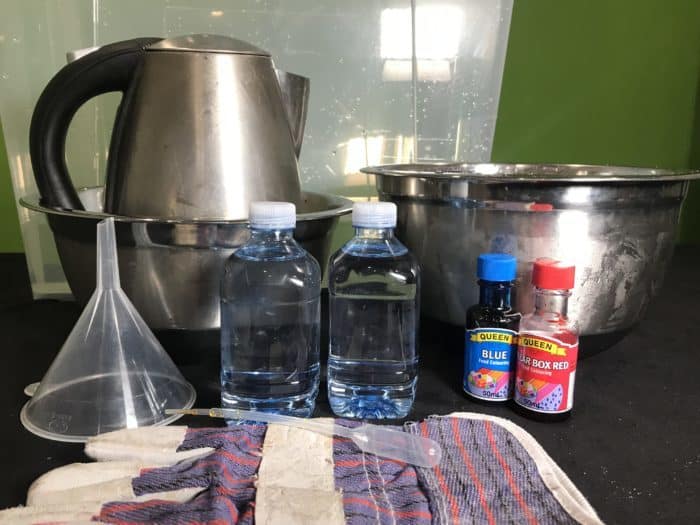
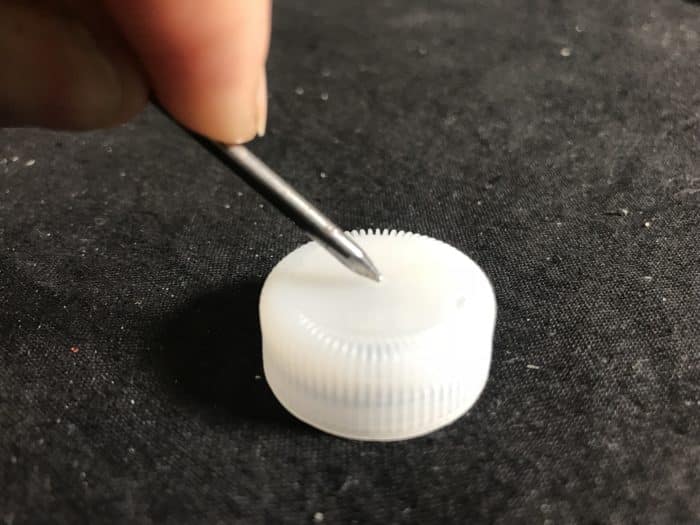
Carefully bore two holes on opposite areas of each of the plastic lids. The larger the hole, the faster the result of the experiment.
SAFETY: If children are to do this, please ensure that hand drills used are not electrically. Alternatively, hand drill the lids prior to children commencing the experiment, or use stretched balloons with holes instead.
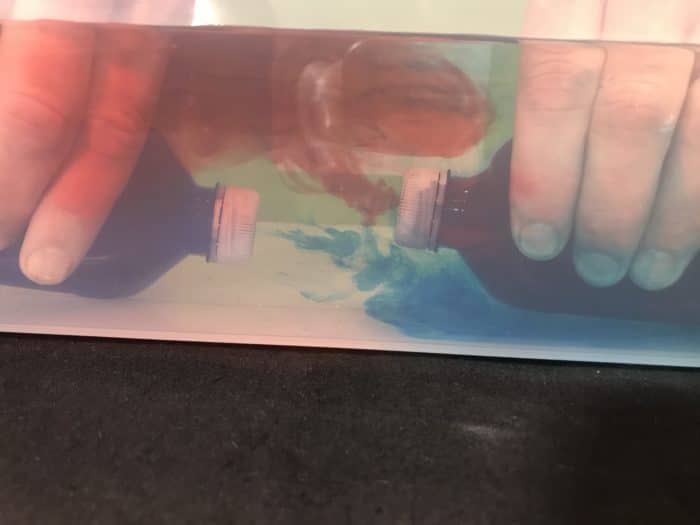
Gently lower both jars to the bottom of the 5 litre container, making sure that each jar has the holes in the same vertical position as each other.
Allow the coloured water to seep into the surrounding water. You can speed the process by gently squeezing the sides of the jars. However, be careful not to disturb the main body of water.
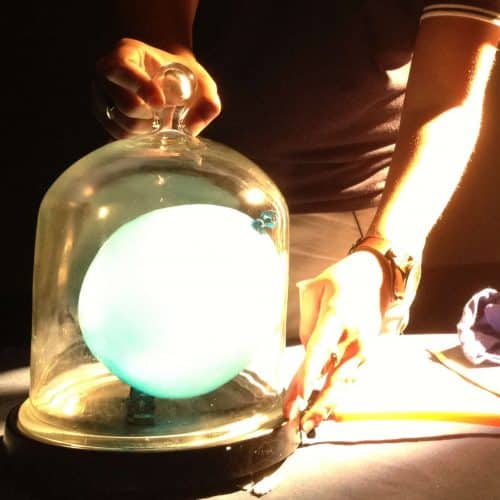
School science visits since 2004!
– Curriculum-linked & award-winning incursions.
– Over 40 primary & high school programs to choose from.
– Designed by experienced educators.
– Over 2 million students reached.
– Face to face incursions & online programs available.
– Early learning centre visits too!
Why Does This Happen?
Warm water will float above cold layers of water because it is less dense.
In still bodies of water such as lakes and dams, very distinct layers of warm and cold water form. This phenomenon is called thermal stratification and has a profound influence on the variety of life found within the lakes and reservoirs. The warmer layer, the epilimnion, typically circulates within itself due to solar-driven convection. The colder layer, the hypolimnion, tends to remain much more still, with the size of the temperature layers changing over the changing seasons.
This is why it’s often more comfortable to swim along the surface of a lake rather than dive down to the colder depths. Find out more about a thermocline, also known as a metalimnion. This is the area whereby the rapid change in water temperature occurs.
Whilst in polar regions there are complex movements of currents disturbing the thermal stratification, warmer water will still float above colder water and produce sharp changes in temperature as the depth changes. Coldwater has more dissolved oxygen and is thereby more conducive to life.
Variables to test
- What happens if you use salty water?
- Change the size of the opening of the bottle.
- Does it matter about which type of liquid that you use?
Teaching about floating & sinking? from density to surface tension, our Working with Water workshop has you covered!
Get in touch with FizzicsEd to find out how we can work with your class.
Working with Water
Years K to 2
Maximum 30 students
School workshop (NSW & VIC)
60 or 90 minutes
Online Class Available
STEM Full Day Accelerator - Primary
Designed from real classroom experiences, this modular day helps you create consistently effective science learning that directly address the new curriculum with easily accessible and cost-effective materials.
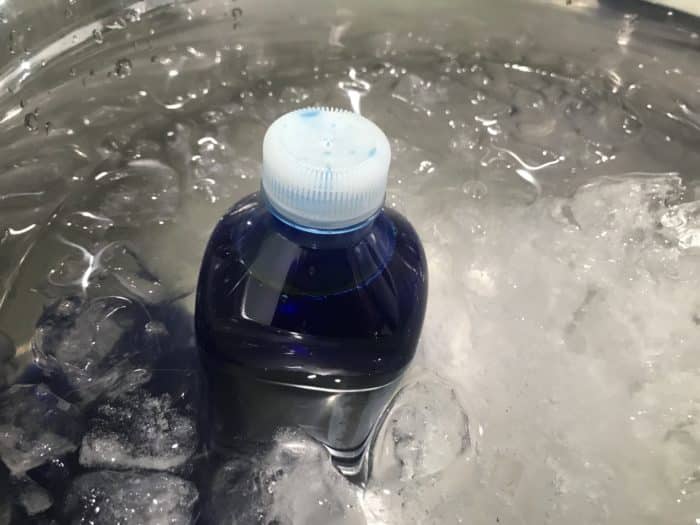
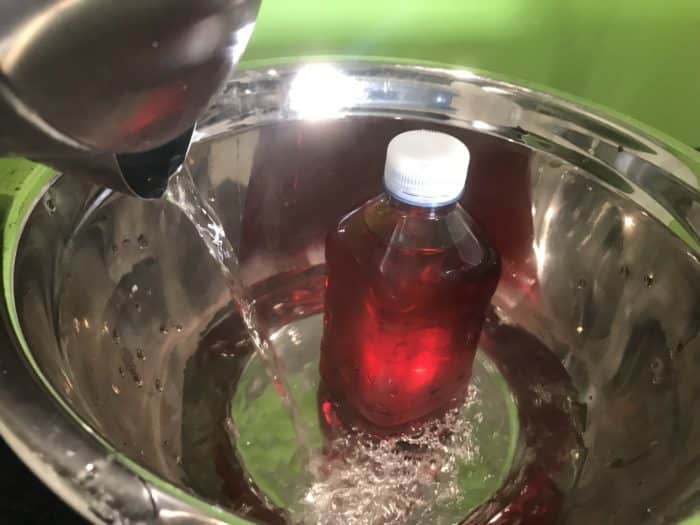



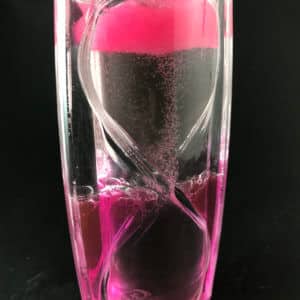
























Comments